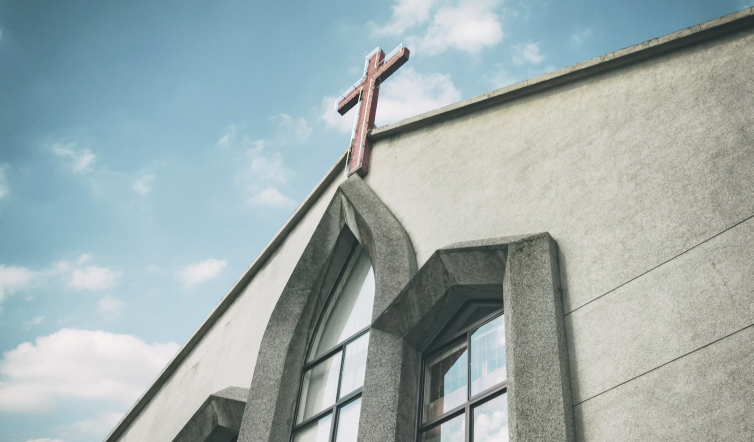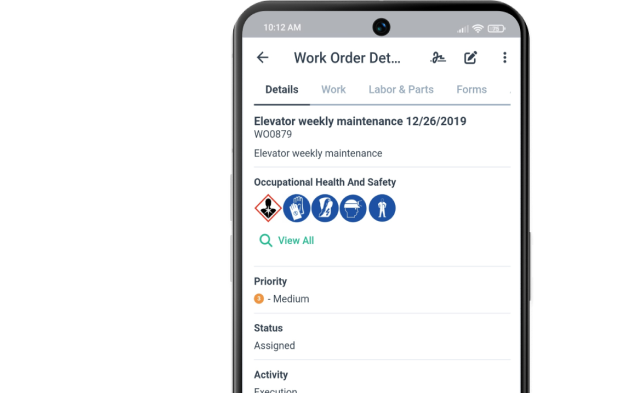Get a Free WorkTrek Demo
Let's show you how WorkTrek can help you optimize your maintenance operation.
Try for freeYour church’s aging roof is likely harboring invisible damage that could lead to catastrophic failure when you least expect it. Every rainstorm, every winter freeze, and every summer heat wave is slowly compromising your roof’s integrity, putting your entire building—and your congregation’s financial stability—at serious risk.
Imagine Sunday service interrupted by water pouring through the ceiling or discovering that years of undetected moisture have rotted your historic timber frame. The average roof repair after neglect costs churches between $25,000 and $100,000, which could have funded your ministry efforts.
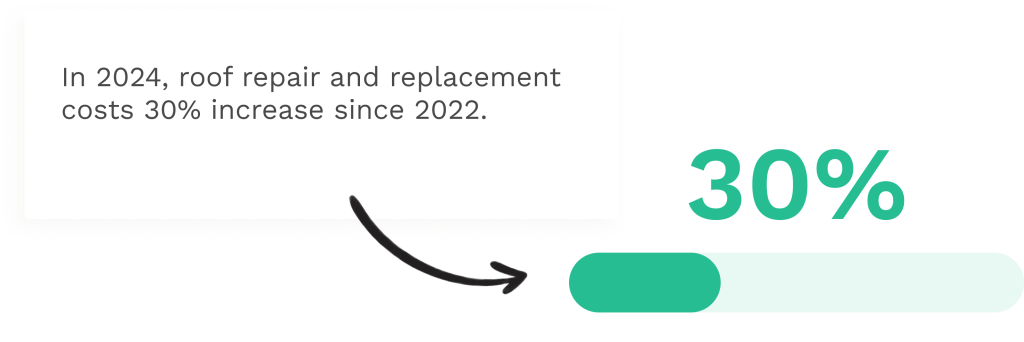
Worse, these emergencies often strike during the worst possible moments, forcing difficult choices between proper repairs and quick fixes.
Fortunately, implementing a strategic roof maintenance plan can prevent these disasters. Our 10 essential church roof maintenance tips will prevent costly repairs.
This article will guide you through simple, cost-effective steps to protect your church roof, extend its lifespan, and save thousands in emergency repairs.
With proper care, your church roof will continue sheltering your sacred space for decades, keeping your congregation safe and your ministry budget intact.
Key Takeaways
- Regular inspections and preventative maintenance can extend a church roof’s lifespan and prevent costly emergency repairs.
- Proper documentation of roof conditions helps track changes over time and informs maintenance decisions.
- Professional roofing services should be engaged for comprehensive evaluations at least once a year and after severe weather events.
Understanding Your Church Roof Structure
Churches typically have unique and complex roof designs that require specific maintenance approaches. Knowing your roof’s construction and design elements helps create effective maintenance plans and identify potential problem areas before they escalate.
Identify Roof Type and Materials
Most church roofs fall into several common categories: slate, tile, metal, or asphalt shingle. Each material has different lifespan expectations and maintenance needs.
Common Church Roof Materials:
- Slate: Durable (75-200 years), heavy, requires specialized repairs
- Clay Tile Roof: Long-lasting (50-100 years), brittle, distinctive appearance
- Metal: Durable (40-70 years), lightweight, reflects heat effectively
- Asphalt Shingles: Affordable, shorter lifespan (15-30 years), easier to repair

Understanding your specific material helps you know when to call a professional roofer for the right type of maintenance. Document the age of your current roof system to anticipate replacement needs better.
Familiarize With Roof Architecture
Church roofs often include distinctive architectural elements like steeples, bell towers, dormers, and complex drainage systems. These features require special attention during inspections and require experienced roofing professionals.
That is why a church roof replacement project is generally more costly than replacing standard commercial roofs.
When inspecting, consider valleys, intersections, and transitions between roof sections. These areas are prone to leaks and deterioration over time.
Given the unique nature of church rooftops and buildings, focus on Architectural integrity must be maintained during any repair or replacement.
Many historic churches have unique designs that require specialized knowledge to maintain properly.
Look for unusual design elements that might collect debris or hinder water drainage. Complex rooflines with multiple angles create additional areas where debris buildup can lead to water damage.
1. Developing a Maintenance Plan
A structured maintenance plan helps churches protect their roofing investment and avoid unexpected repair costs. Effective plans integrate regular inspections and preventative actions based on seasonal needs and the roof’s vulnerabilities.
Schedule Regular Inspections
Professional roof inspections should occur at least twice yearly—ideally in spring and fall. These seasons provide optimal timing to assess winter damage and prepare for upcoming weather challenges.
Mark inspection dates on your church calendar and assign specific maintenance team members responsibility. Each element of your church building, including your roof, has an expected life cycle, so tracking its condition consistently is essential.
During inspections, document all findings with photos and detailed notes.
A Computerized Maintenance Management System (CMMS) tool like WorkTrek will simplify documenting inspections.
Create a simple checklist that includes:
- Checking for loose or damaged shingles/tiles
- Replace missing or damaged shingles
- Look for signs of roof damage or leaks
- Examining flashing around chimneys and vents
- Assessing gutter and downspout condition
This documentation creates a historical record that helps identify problems before they become serious failures.
Prioritize Preventative Measures
Preventative maintenance saves churches significant money compared to reactive repairs.
Clean gutters and downspouts at least twice yearly to prevent water damage to the roof structure. Clogged gutters tend to overflow and cause water damage.

Remove overhanging branches that could damage the roof during storms. These simple actions significantly reduce roof stress and extend its lifespan.
Allocate funds specifically for roof maintenance in your annual budget. Many churches create a dedicated maintenance fund that accumulates for routine care and eventual replacement over time.
Consider working with a roofing professional specializing in church buildings, as they understand these structures’ unique architectural challenges.
Regularly inspecting your church roof and knowing when to call a professional roofer helps maintain it properly.
Implement seasonal maintenance tasks like clearing snow accumulation in winter and checking for heat-related damage during summer months.
2. Performing Routine Inspections
Regular inspection is the cornerstone of effective church roof maintenance. Catching small issues early prevents them from becoming expensive emergencies and extends the life of your roof structure.
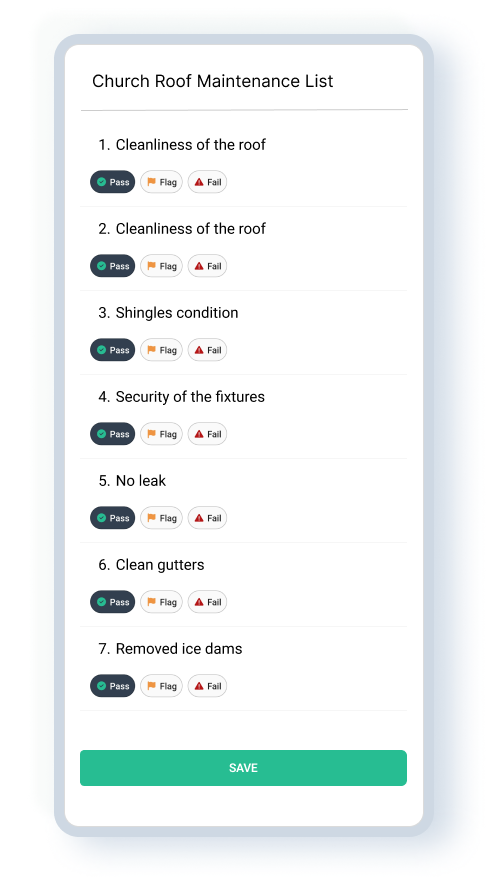
Also, consider inspections before significant weather events or severe weather conditions.
Check for Signs of Wear and Damage
Prompt attention to visible damage signs on your church roof is essential for preventing major repairs.
Establish a twice-yearly inspection schedule – ideally in late spring and fall. This timing allows you to address winter damage and prepare for upcoming seasonal challenges.
Look specifically for:
- Cracked, broken, or missing shingles/tiles
- Damaged flashing around chimneys and vents
- Sagging roof sections
- Interior water stains or dampness
- Damaged sealant around roof penetrations
For initial assessments, contact a professional roofing contractor for a free inspection. Hire qualified roofing professionals who understand historical, religious, and place-of-worship building structures for thorough inspections.
Document all findings with photos and written notes. This creates a maintenance history that helps track deterioration patterns over time.
Assess for Environmental Impact
Environmental factors significantly affect church roof longevity. Trees near your building require special attention as branches can scrape roofing materials during storms, while fallen leaves collect moisture that damages roofing materials.
Regular maintenance should include:
- Trimming tree branches that hang over or near the roof
- Removing debris like leaves, sticks, and dirt
- Checking for moss, algae, or lichen growth
- Inspecting for animal nests or damage
- Assessing drainage systems for blockages
Climate-specific concerns need particular attention. In snowy regions, watch for ice dam formation along eaves. In humid areas, inspect for mold and mildew development.
Creating a structured maintenance checklist specifically for environmental impacts helps ensure consistent monitoring of these issues year after year.
3. Address Water Damage and Leakage
Water damage is the primary enemy of church roofs and can lead to structural deterioration, mold growth, and damaged interior finishes.
Prompt identification and repair of leaks can save thousands in repair costs and preserve historical elements.
Ensure Proper Drainage
Proper drainage is essential for protecting your church roof from water damage. Remove leaves, twigs, and other debris that can clog these drainage systems.
Check that downspouts direct water at least 3 feet from the building’s foundation. When needed, installing downspout extensions is a simple, cost-effective solution.
For flat sections of church roofs, ensure adequate slope toward drainage points. Standing water, or “ponding,” can quickly damage roofing materials and create entry points for moisture.
Consider installing gutter guards in areas with heavy tree coverage to minimize maintenance needs while maintaining proper water flow.
Repair Leaks Promptly
Take immediate action when water damage signs appear or you notice roof leaks.
Rather than waiting for extensive damage to occur, contact a professional roofing company to assess the extent of the damage as soon as leaks are detected.
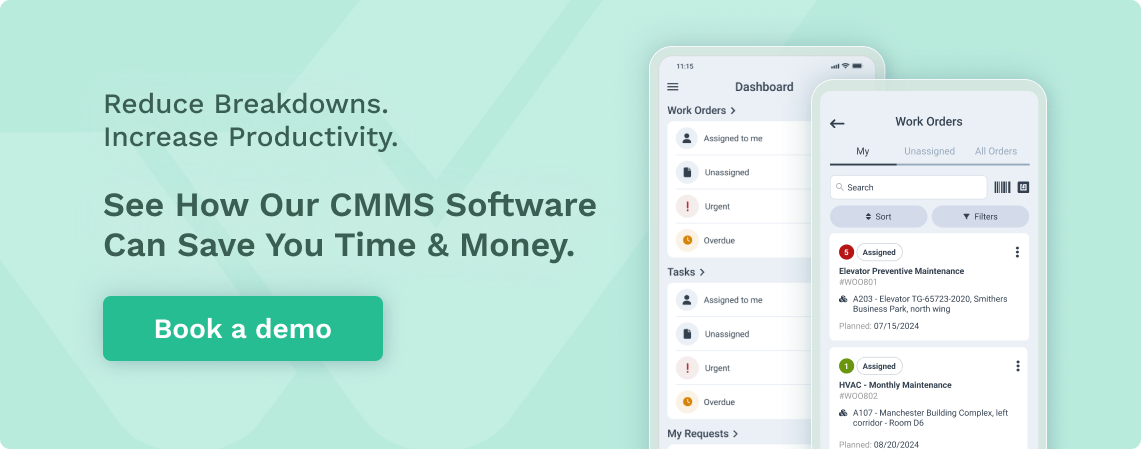

Look for early warning signs inside the church, including:
- Water stains on ceilings or walls
- Damp spots after rainfall
- Peeling paint or bubbling plaster
- Musty odors that might indicate hidden moisture
Use tarps to cover damaged areas for temporary emergency protection before professional repairs. However, these should never be considered long-term solutions. Long term foruc
Churches with historical significance may require specialized roof repair techniques.
Working with contractors experienced in historic preservation ensures that repairs maintain architectural integrity while effectively protecting against water infiltration.
4. Managing Vegetation and Debris
Vegetation and debris are common threats to church roof integrity. Left unmanaged, they can trap moisture, block drainage systems, and cause significant structural damage over time.
Trim Overhanging Branches
Trees near church buildings require regular attention. Overhanging branches can scrape against roofing materials during storms, damaging shingles and protective coatings. When branches break during storms, they may puncture the roof surface, creating entry points for water.
Maintain a minimum clearance of 10 feet between tree limbs and the roof surface. This distance helps prevent damage while still providing the aesthetic benefits of surrounding trees.
It can also create a safe fire zone around your building.
Schedule professional tree trimming annually, ideally in late fall after leaves have dropped. This timing makes it easier to identify problematic branches and reduces stress on the trees.
For historic churches with mature trees, consult an arborist specializing in historic property maintenance to balance preservation needs with building protection.
Clean Gutters and Downspouts
Clogged gutters and downspouts prevent proper water drainage, leading to water damage and premature roof failure.
To prevent water damage to the building structure, clean gutters and downspouts at least twice yearly.
Use a sturdy ladder with a stabilizer attachment when cleaning gutters on church buildings. Always have a second person present for safety.
Remove leaves, twigs, and sediment buildup using gloved hands or a small garden trowel. After cleaning, flush the system with water to ensure proper flow.
Install gutter guards to minimize debris accumulation, especially if many trees surround the church. Mesh screens or solid covers can significantly reduce maintenance frequency.
For churches with complex rooflines, consider professional gutter cleaning services, which use the proper equipment to safely access all areas of the building.
5. Handling Roof Cleaning
Regular cleaning of your church roof removes debris, prevents moss growth, and extends roof life.

Proper cleaning techniques protect roofing materials, while harsh chemicals can cause premature deterioration.
Use Appropriate Cleaning Methods
Soft washing is ideal for most church roofs. This low-pressure cleaning method uses specialized equipment that won’t damage shingles or other roofing materials.
To remove moss and algae, gently brush with soft bristles to avoid scratching roofing surfaces.
Check to make sure you have proper attic ventilation and the
Professional roof cleaners familiar with church structures are often worth the investment.
They have the proper safety equipment and expertise to clean hard-to-reach areas without causing damage.
For metal roofs, use soft cloths and gentle cleaners designed specifically for metal surfaces to avoid scratching protective coatings.
Avoid Harsh Chemicals
Chemical cleaners containing bleach or chlorine can damage roofing materials and surrounding landscaping. They may also accelerate the deterioration of metal fasteners and flashing components.
Instead, choose environmentally friendly cleaners specifically designed for roof surfaces. Look for products labeled as roof-safe that won’t harm plants or soil below.
Vinegar solutions (1 part vinegar to 3 parts water) can safely remove light stains and algae without damaging roofing materials.
For stubborn areas, oxygen-based cleaners offer effective cleaning without harsh side effects.
Always test cleaning solutions on a small, inconspicuous area first. This ensures compatibility with your specific roofing material before applying to larger areas.
6. Maintaining Roof Accessories
Roof accessories can protect your church building from water damage.
These components require regular attention to ensure they function correctly and extend the life of your entire roofing system.
Inspect and Repair Flashing
Flashing is the metal material installed at roof joints and around projections to prevent water from seeping in.
Check all flashing around chimneys, vents, skylights, and where roof sections meet walls or other roof planes.
Look for signs of deterioration, including:
- Rust or corrosion
- Loose or missing sections
- Cracks or separations
- Bent or damaged pieces
Inspect your roof systematically after major storms, as high winds can damage flashing. When you find damaged flashing, repair it promptly to prevent leaks.
Apply roofing cement to seal small gaps where flashing meets the roof. For severely damaged flashing, replacement is often necessary.
Also, replace damaged shingles around the flashings.
Consider hiring a professional roofer for complex repairs, especially on steep or high church roofs.
Secure Loose Fixtures
Roof fixtures like vents, satellite dishes, and lightning rods can become loose over time. These items need regular inspection and maintenance.
Start by examining all roof-mounted equipment:
- HVAC components
- Antennas or communication equipment
- Lightning protection systems
- Cross or steeple attachments
Tighten any loose bolts, screws, or mounting brackets. Replace damaged hardware with proper roofing-grade fasteners to prevent water penetration.
Keep detailed information about your roof fixtures and their maintenance requirements. This documentation helps ensure consistent upkeep regardless of personnel changes.
Apply appropriate sealants around penetrations where fixtures attach to the roof. Use materials compatible with your specific roofing type. During winter, monitor fixtures carefully, as freeze-thaw cycles can cause additional stress on mountings.
7. Preparing for Extreme Weather
Churches face unique challenges when severe weather strikes. Proactive measures can protect your church roof from damage and extend its lifespan through storms, high winds, and harsh winter conditions.
Strengthen Roof Against Storms
Start by conducting regular inspections of your church roof to identify potential weak points before storms arrive. Look for loose shingles, deteriorating flashing, and weakened structural components.
If your church is in a storm-prone area, consider upgrading your roofing materials to those rated for high wind resistance. Many manufacturers now offer impact-resistant roof shingles specifically designed to withstand harsh weather.
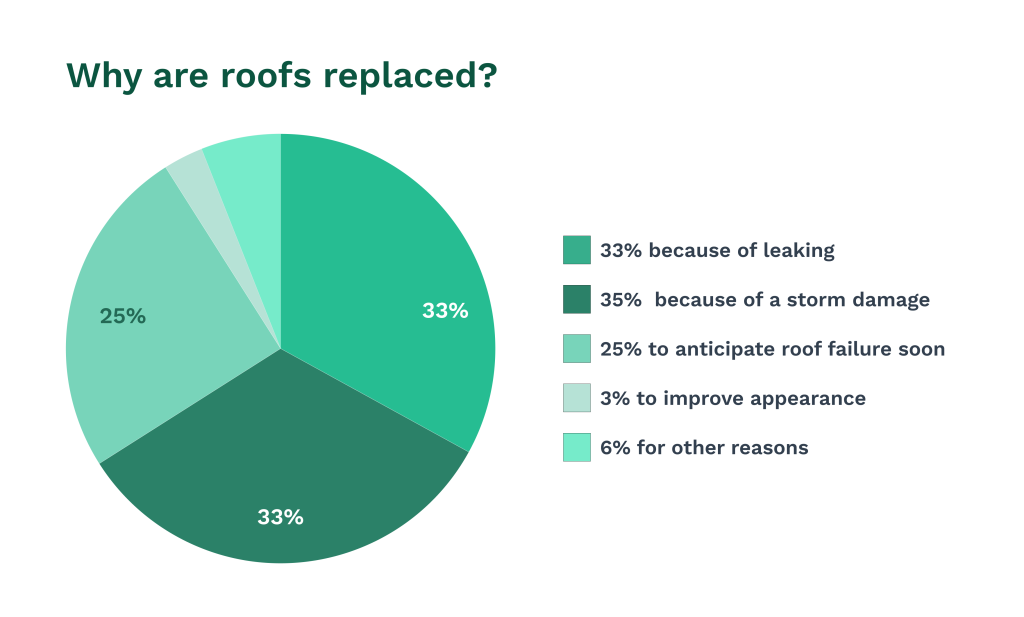
Trim trees near the church building to prevent branches from falling onto the roof during high winds. Branches should be kept at least 10 feet away from the roof surface.
In areas prone to serious storms, reinforce roof connections with hurricane straps or clips. These metal connectors significantly strengthen the attachment between the roof and walls.
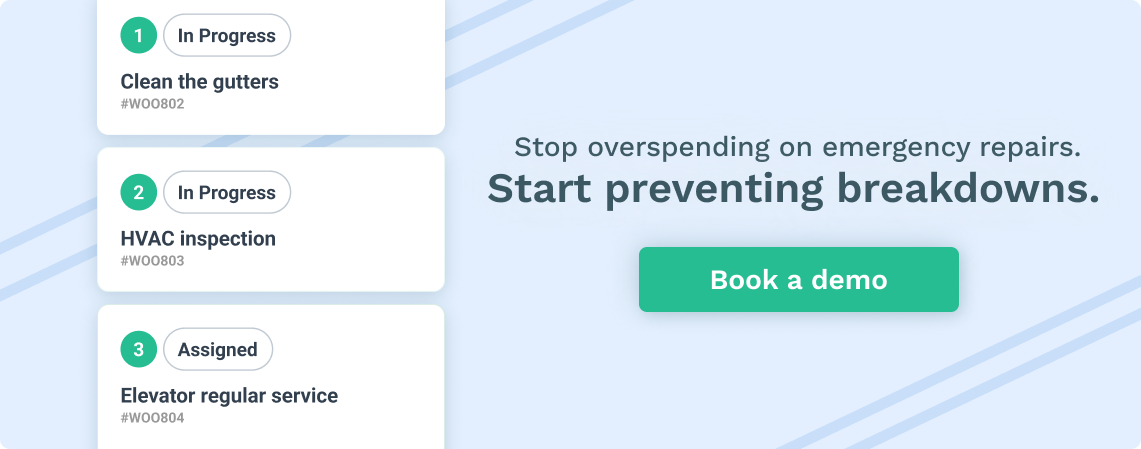
Winterize the Roof
Check for and remove ice dams regularly during winter months. These formations can force water under shingles and cause significant interior damage.
Install adequate insulation and ventilation in the attic space. This helps maintain a consistent roof temperature and prevents the freeze-thaw cycles that can damage roofing materials.
Consider installing heating cables along roof edges in areas with heavy snowfall. These prevent ice dam formation by consistently melting snow across the roof surface.
8. Documenting Maintenance and Repairs
Proper documentation of your church roof’s maintenance history and repairs is crucial for long-term management and budget planning. Records help track wear patterns and provide valuable information for future maintenance teams.
Keep Detailed Records
Create a dedicated maintenance log for your church roof, including dates, work descriptions, and costs. Take photos or videos of any damage found and repairs made to maintain visual documentation of your roof’s condition over time.
Include contact information for contractors who have worked on the roof and copies of warranties, invoices, and guarantees. Store materials specification sheets and product information for all roofing components.
Consider using digital record-keeping solutions to organize and access your documentation easily. Cloud storage ensures that records aren’t lost due to physical damage and can be accessed by multiple church committee members.
Make notes about weather events that may have affected the roof, such as heavy storms, hail, or snow accumulation.
Review and Update Documentation Annually
Schedule an annual documentation review meeting with your church maintenance committee to assess the completeness and accuracy of your records. This regular review helps identify recurring issues that might indicate deeper problems.
Update your maintenance schedule based on the previous year’s experiences and the roof’s current condition. Note any emerging patterns, such as leaks in certain areas or seasonal issues.
Use this review to plan and budget for upcoming maintenance needs. Examining cost trends can help forecast future expenses more accurately.
Share documentation with new committee members or facilities managers to ensure continuity of knowledge. This prevents the loss of institutional memory when leadership changes occur.
Consider creating a simple executive summary highlighting key findings from your annual review for church leadership and budget planning purposes.
9. Engage Professional Services
Professional help is crucial for maintaining church roofs properly. While basic upkeep can be managed internally, certain aspects of roof maintenance require specialized knowledge and equipment.
Hire Certified Roofing Contractors
When selecting roofing professionals for your church, always verify that they have proper certification and insurance. Look for contractors with specific experience working on religious buildings, as these structures often have unique architectural features requiring specialized knowledge.
Request multiple bids from different companies to ensure competitive pricing. Look for contractors who understand your building’s historical or architectural significance.
Establish a maintenance contract with your chosen professional. This arrangement typically includes bi-annual inspections, minor repairs, and documentation of the roof’s condition over time.
Reputable contractors will provide detailed reports after each inspection, highlighting current issues and potential future concerns. These relationships often result in cost savings through early problem detection.
Consult Experts for Major Repairs
Consulting with specialized experts becomes essential for significant damage or structural concerns. When visible damage appears concerning, structural engineers can assess the underlying support system.
If your church has a historical designation, historical preservation specialists should be involved. These experts ensure that repairs maintain the building’s historical integrity while addressing functional needs.
Consider forming a professional assessment team for extensive projects, including:
- Structural engineer
- Roofing contractor
- Historical consultant (if applicable)
- Building inspector
This collaborative approach helps identify comprehensive solutions rather than temporary fixes. Expert consultations may seem costly initially but prevent expensive emergency repairs later.
Professionals can also help develop long-term maintenance plans tailored to your roof type and regional weather conditions.
10. Leveraging CMMS for Church Roof Maintenance
Implementing a Computerized Maintenance Management System (CMMS) like WorkTrek can significantly enhance the efficiency and effectiveness of maintaining your church’s roof. This technology offers a structured approach to managing maintenance tasks, ensuring your church roof remains in optimal condition while preventing costly repairs.
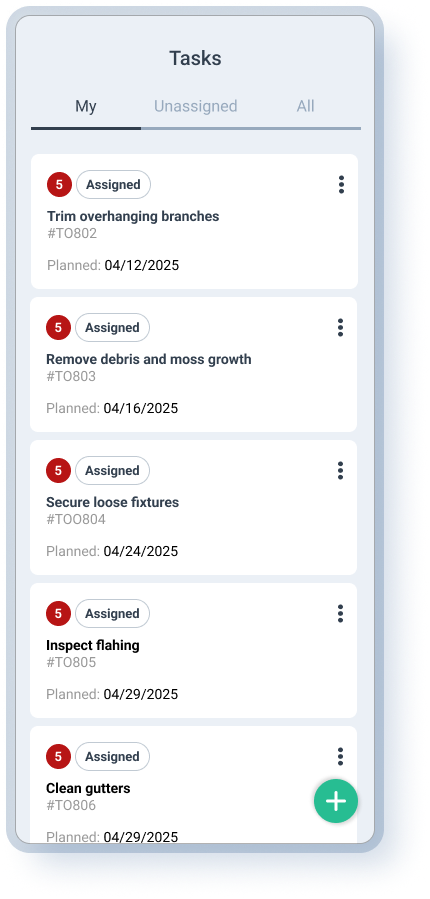
Key Benefits of CMMS
- Centralized Maintenance Data: CMMS provides a single platform to store all maintenance-related information, including inspection reports, repair logs, and contractor details. This centralization aids in tracking the roof’s condition over time and facilitates informed decision-making.
- Automated Scheduling: The system can automate the scheduling of regular inspections and maintenance tasks, such as cleaning gutters or checking for damaged shingles. This ensures routine maintenance is consistently performed, reducing the risk of unexpected issues.
- Task Management: CMMS allows for efficient assignment and tracking of maintenance tasks. You can assign specific duties to maintenance team members or contractors, ensuring accountability and timely completion of all necessary work.
- Budget Control: By tracking all expenses related to roof maintenance and repairs, CMMS helps manage the church’s budget effectively. It provides insights into the costs involved, allowing for better financial planning and resource allocation.
- Predictive Maintenance: Advanced CMMS features can analyze data to predict potential roof issues before they become major problems. This predictive capability supports preventative maintenance strategies, saving money on significant repairs.
Implementing CMMS in Your Church
To maximize the benefits of CMMS for your church roof maintenance, consider the following steps:
- Choose the Right System: Select a CMMS that meets your church’s specific needs, focusing on ease of use, scalability, and compatibility with existing church management systems.
- Training and Adoption: Ensure that staff and volunteers involved in maintenance are trained to use the CMMS effectively. Conduct training sessions to familiarize them with the system’s capabilities and features.
- Regular Updates: Keep the CMMS updated with the latest maintenance activities, inspection results, and repair work. This ensures that accurate data is available for future planning and decision-making.
- Continuous Improvement: Use the insights from CMMS reports to refine and optimize your maintenance strategies. Review the data regularly to identify trends and areas for improvement.
By integrating a CMMS into your church’s roof maintenance plan, you can streamline operations, enhance maintenance efficiency, and ensure the longevity of your church’s roof, safeguarding your sacred space for future generations.
Conclusion
Implementing a comprehensive church roof maintenance plan is not just about preventing costs—it’s about protecting your sacred space and ensuring ministry continuity.
By following these ten essential maintenance tips, from regular professional inspections to proper documentation and leveraging modern CMMS technology, your church can avoid catastrophic failures and significantly extend its roof’s lifespan.
Remember that your roof is your first line of defense against the elements. Each dollar invested in preventative maintenance saves approximately seven dollars in emergency repairs, allowing more resources to flow toward your church’s mission rather than unexpected building costs.
Don’t wait for leaks or visible damage to appear. Start today by scheduling a professional inspection, creating a maintenance calendar, and establishing a dedicated maintenance fund.
With diligent care and attention, your church roof will continue to shelter your congregation and protect your ministry investments for generations.




